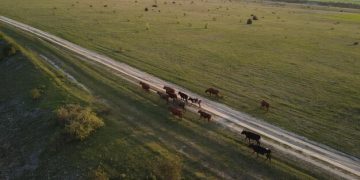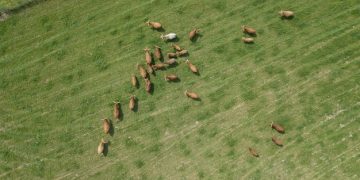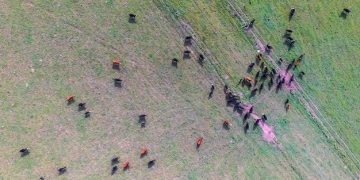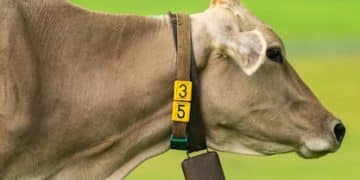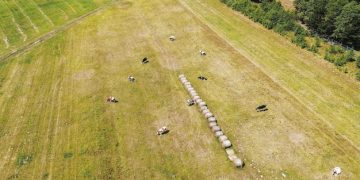Sensor-based livestock monitoring tools: enhancing farm efficiency
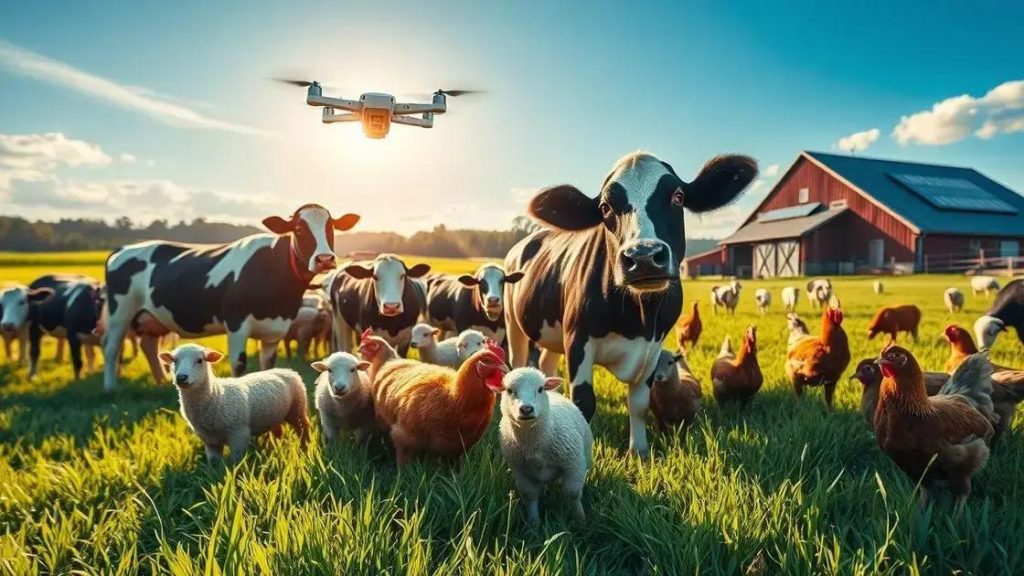
Sensor-based livestock monitoring tools enhance farm efficiency by providing real-time data on animal health, location, and resource management, leading to improved decision-making and productivity.
Sensor-based livestock monitoring tools are changing the way farmers manage their herds. Have you wondered how technology can improve animal welfare and boost farm productivity? This article explores the exciting world of livestock monitoring.
Understanding sensor-based livestock monitoring
Understanding sensor-based livestock monitoring is essential for modern farming. With technology advancing rapidly, farmers are now equipped with powerful tools to improve their livestock management. These tools can track various metrics, such as health, location, and feed consumption, all from a distance.
How It Works
At the core of sensor-based monitoring are small devices that can be attached to animals. These sensors gather data continuously. They can send real-time information to farmers via mobile applications or computers. This offers a comprehensive view of each animal’s condition.
Key Metrics Monitored
- Health Indicators: Regularly tracking vital signs like temperature and heart rate helps identify health issues early.
- Location Tracking: Farmers can monitor where their livestock is at any time, ensuring safety or preventing them from wandering off.
- Feed & Water Intake: Monitoring how much feed and water each animal consumes can help in managing diets efficiently.
This level of detail allows for better decision-making regarding the care of livestock. For instance, if a sensor indicates a drop in feed intake, it might indicate a health problem that requires immediate attention. Likewise, tracking health metrics can lead to less reliance on antibiotics, promoting healthier herds and sustainability.
Benefits of Using Sensors
Adopting sensor-based livestock monitoring can significantly boost farm productivity. Farmers can quickly react to changing conditions, improving animal welfare. Additionally, they can gather valuable insights over time, aiding in long-term planning.
Moreover, these sensors can help create a more efficient use of resources. By analyzing data on feed and water usage, farmers can make adjustments to their supply chains, reducing waste and costs. Overall, incorporating this technology can make farms more efficient and profitable.
Key benefits of using monitoring tools

The key benefits of using monitoring tools in livestock management are numerous. These tools not only help farmers save time but also enhance productivity. By implementing these technologies, farm operations become smoother and more efficient.
Enhanced Health Monitoring
One significant advantage is the ability to monitor animal health continuously. With sensors, farmers can receive real-time data on their livestock’s vital signs, temperature, and behavior patterns. This information is crucial for early detection of illnesses, allowing for prompt interventions.
Increased Productivity
- Efficient Resource Management: Automated tracking of feed and water intake helps optimize resource usage.
- Improved Breeding Decisions: Understanding reproductive cycles through data can lead to better breeding outcomes.
- Reduced Labor Costs: Automation reduces the need for manual checks, leaving farmers more time to focus on other areas.
These benefits contribute to greater farm efficiency. For instance, when farmers can actively monitor feed consumption, they can quickly adjust rations to meet the specific needs of their animals. This not only keeps the livestock healthy but also enhances growth rates and overall production.
Better Data Analysis
With monitoring tools, data collection is simple and straightforward. Farmers can track trends over time, helping them make informed decisions. Analyzing this data can reveal patterns that were previously unnoticed. For example, a sudden increase in water consumption might indicate a health concern that needs addressing.
Ultimately, these monitoring tools empower farmers to act proactively, improving the livelihood of their livestock and boosting their farms’ success. By embracing these advancements, farms can adapt to modern demands more effectively, ensuring sustainability and profitability for the future.
How to choose the right monitoring tools
Choosing the right monitoring tools for livestock management can significantly impact farm efficiency. With several options available, knowing what to look for is crucial. By carefully evaluating your needs, you can select tools that will help streamline your operations.
Assess Your Specific Needs
Start by determining what specific issues you wish to address. Are you interested in tracking health metrics, monitoring location, or managing feed intake? Identifying your primary goals will guide your selection process. For instance, if health monitoring is critical, focus on tools that provide detailed health analytics.
Evaluate Features and Usability
- Connectivity: Make sure tools can easily connect with other devices and systems.
- Data Interpretation: Choose tools that offer clear insights and user-friendly interfaces.
- Customization: Look for options that allow you to tailor data collection to your farm’s needs.
Usability is another essential factor. The best tools are those that your team can quickly learn and use without unnecessary complexity. Ease of use encourages regular monitoring, making it easier to respond quickly to any issues.
Consider Cost and Value
Budget is always a consideration. Tools come in a range of prices, so it’s vital to weigh features against costs. Sometimes, investing a little more can lead to substantial savings in the long run through improved efficiency and fewer health issues among animals. However, don’t compromise on quality for the sake of a lower price.
Ultimately, choosing the right monitoring tools involves a careful balance of assessing your needs, evaluating features, and considering your budget. Doing thorough research will set you up for success and ensure you implement solutions that truly benefit your livestock management practices.
Integrating monitoring tools with farm management systems

Integrating monitoring tools with farm management systems is a vital step toward enhancing operational efficiency. This integration allows farmers to gather data in one central location, making it easier to analyze and make informed decisions.
The Benefits of Integration
When monitoring tools are connected to farm management systems, it improves overall productivity. Farmers can track livestock health, feed intake, and other critical metrics seamlessly. This leads to a comprehensive overview of farm performance. For example, if a sensor indicates that an animal is not eating well, this information can be logged immediately into the management system for further analysis.
Steps for Successful Integration
- Evaluate Your Systems: Check if your current farm management system supports the integration of new monitoring tools.
- Choose Compatible Tools: Select monitoring tools that work well with your existing systems to avoid compatibility issues.
- Train Your Team: Ensure that all staff understand how to use the integrated system effectively.
By taking these steps, farmers can establish a reliable connection between their monitoring tools and management systems. The result is a streamlined flow of information that informs daily operations. Plus, this data can be useful for long-term planning, allowing farmers to adapt to trends and improve overall herd management.
Data Utilization
The integration isn’t just about collecting data; it’s about using that data to make better decisions. The combined data from monitoring tools and management systems provides insights that can enhance animal health and productivity. For instance, analyzing patterns over time can reveal trends that influence breeding decisions or feed formulations.
Ultimately, successful integration of monitoring tools with farm management systems empowers farmers to operate more effectively. This unity of technology enhances productivity and helps secure a stable future for livestock farming.
FAQ – Frequently Asked Questions about Sensor-Based Livestock Monitoring Tools
What are sensor-based livestock monitoring tools?
These tools are technologies designed to track and analyze the health, behavior, and location of livestock using sensors.
How can integrating monitoring tools with farm management systems benefit my farm?
Integration allows for a centralized data collection, improving decision-making and enhancing overall farm efficiency.
What key metrics can monitoring tools track?
Monitoring tools can track health indicators, feed and water intake, and location, providing insights into livestock management.
Are these monitoring tools easy to use?
Yes, most tools are designed to be user-friendly, incorporating features that simplify data interpretation and usability for farm staff.
